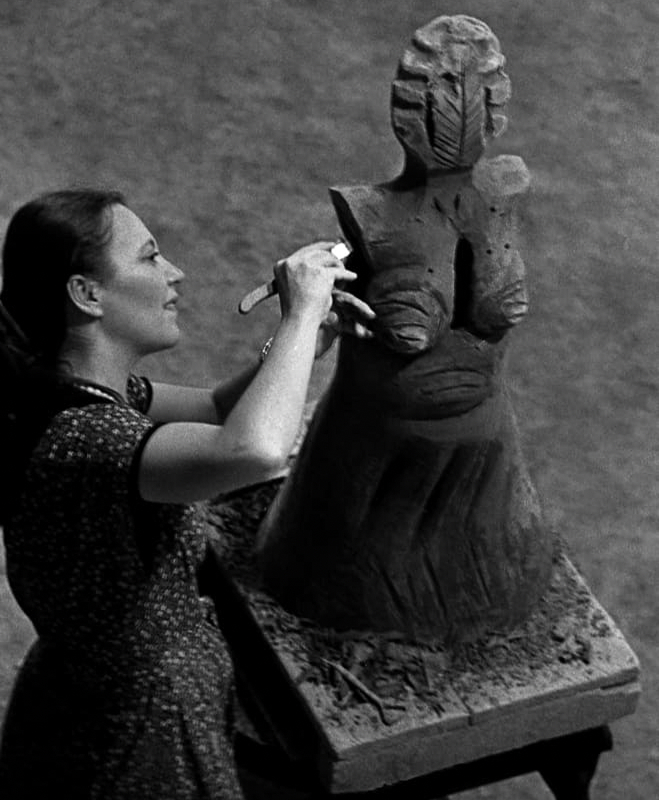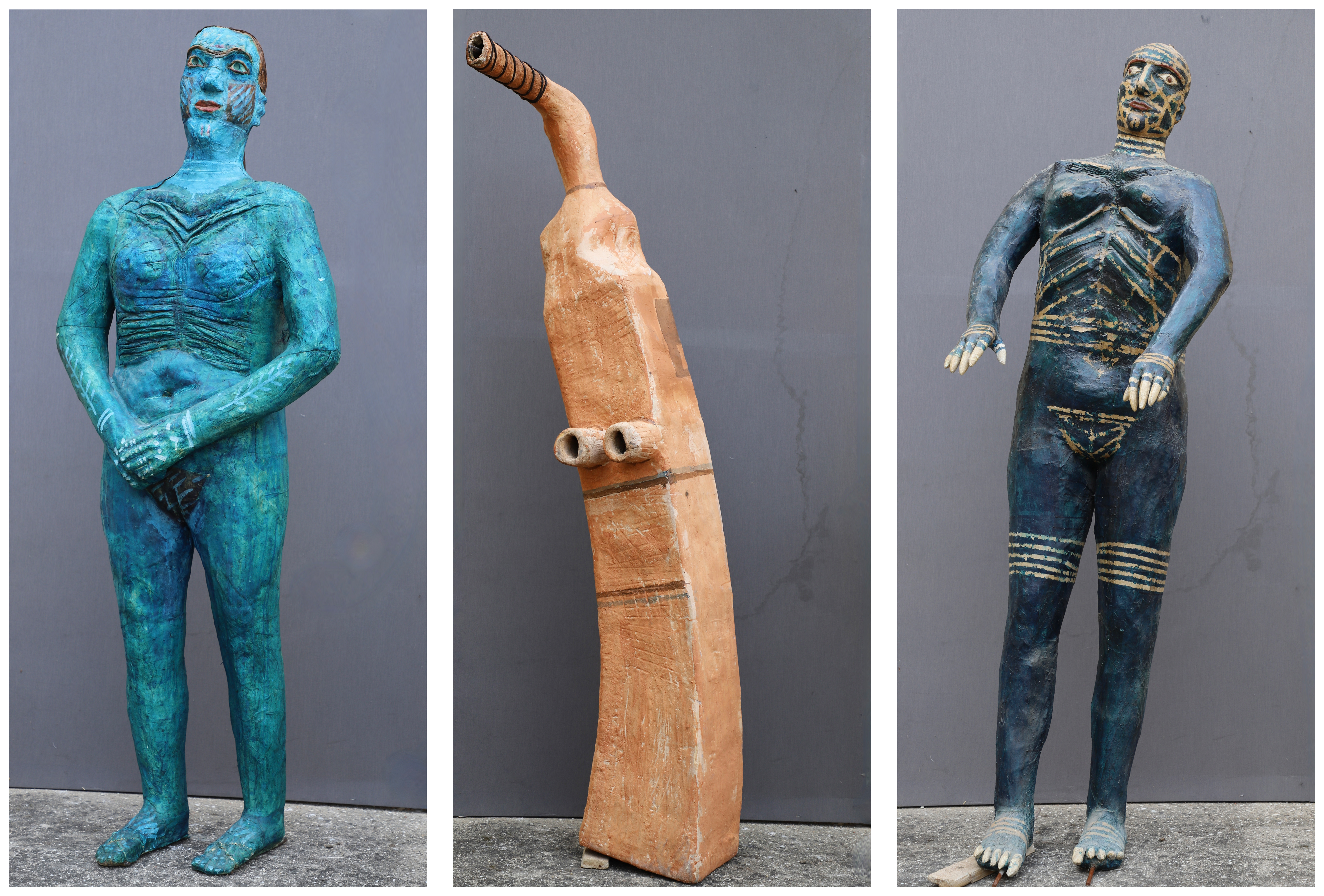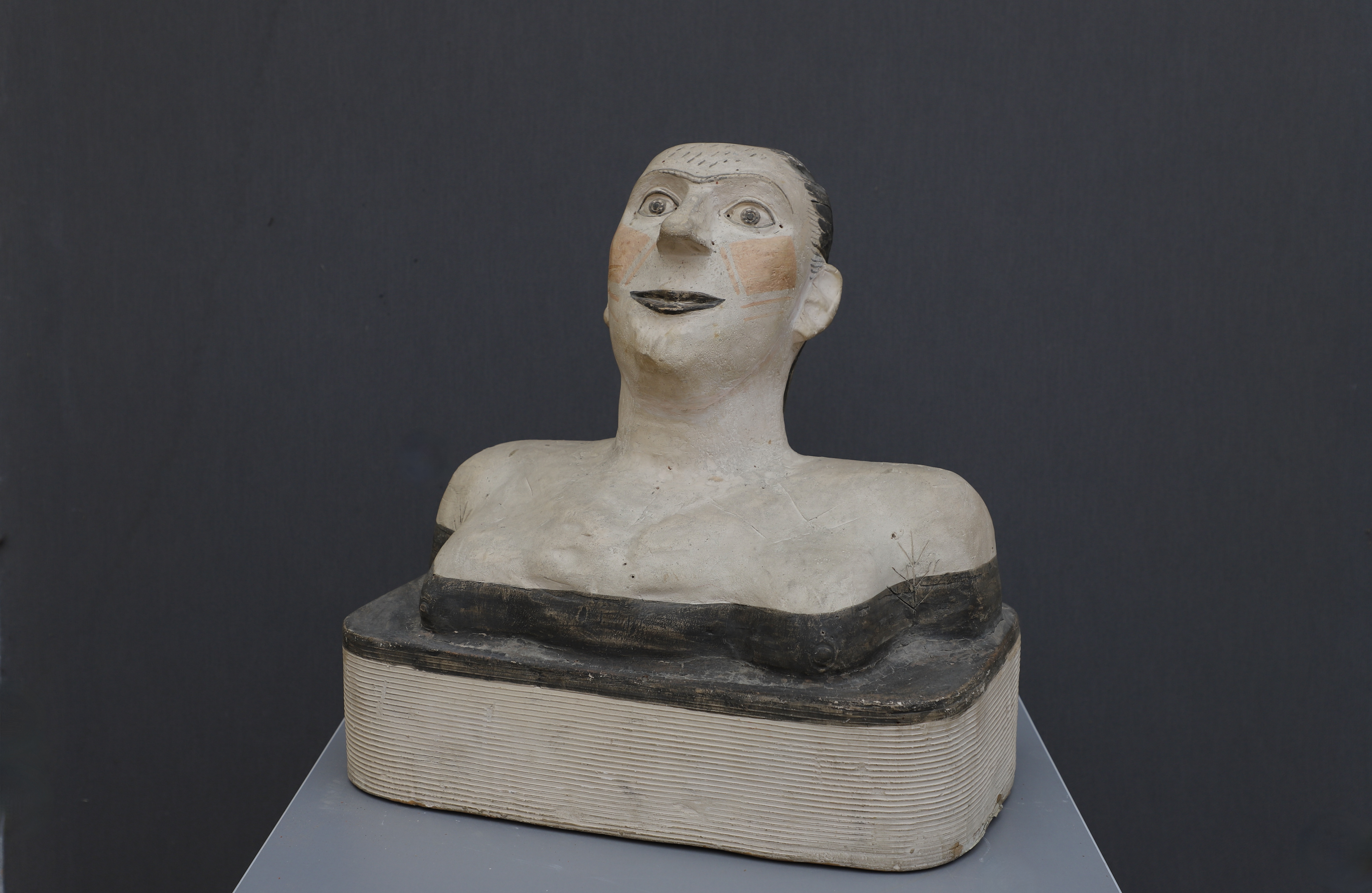→ ESTATE
Aneta Svetieva
(b. 1944)
Bitola, Macedonia

THE ESTATE

This text aims to revisit the huge sculptural opus of Aneta Svetieva (born in 1944 in Bitola, Macedonia) in terms of the formal background of her artworks and the development of her overall aesthetics. I want to recontextualize her artistic achievements within the contemporary art scene of North Macedonia and art history generally.
Unfortunately, Svetieva has no official estate. She was married and divorced twice, and her legal descendants are her two sons: Andrej Anastasov Daskalovski-Edi and Metodi Anastasov. She lives with her younger son, Metodi, but there are no remaining works in her house and studio in Saraj, a village near Skopje.[1] Her sculptures are scattered among various private and public collections. This makes it difficult to access and profoundly research her works, particularly for foreign and younger researchers. In 2021 she donated individual sculptures to the Institute and Museum Bitola, mostly part of her sculptural installation High City(1982–1988). However, the space for the work has not been completed as promised. Thus the donated sculptures are not on display, and the fragile objects are in danger of deterioration, given the materials used and the poor conditions of the storage space.
Some of her smaller sculptures were bought by private collectors, while the bigger objects were acquired by art museums and galleries in North Macedonia (for example, the National Gallery of North Macedonia hosts the project Beauty and the Beast, and the Museum of Contemporary Art has several sculptures from High City). However, the sculptural installations were never gathered in one place.
Ironically, from the outset Svetieva’s sculptures were profoundly concerned with the conceptual questions of durability and ephemerality of the art object (hence she avoided working in marble or bronze)—formal issues highly relevant in the art history debates in the 1970s and 1980s (e.g. the principles proposed by Arte Povera). The complex narratives hinted at in her early sculptures and sculptural installations are highly inspired by regional artifacts of Neolithic provenance and other iconographic and mythological influences that also led to her specific selection of forms, techniques, and materials (e.g. engobe, papier-mâché, polychromatic interventions on clay and terracotta, incrustations, and incisions). For example, her 1989 solo exhibition comprised approximately thirty sculptures (e.g. High City, Female Bather, White Woman Bather—White Female Dove, Woman with a Painted Hand, and Blue Woman Bather) installed on a staged platform resembling an archaeological excavation, and a few were put on the floor, with one layer of sand underneath.[2] No pedestals were used whatsoever.
An inevitable reference in her work is the Balkan Neolithic clay and terracotta figurines of the Great Mother Goddess (Woman-House, a joint representation of a woman and a house).[3] Svetieva’s unique interests in archaeology, anthropology, and representations of mythic and religious rituals, and her shift from dominating individual objects fixed on separated pedestals to spatialization of sculptures that gradually developed into installations comprising individual sculptures, found objects, readymades, and new media, coincided with Rosalind E. Krauss’s observation of the paradigm shift in sculpture at the time, which Krauss referred to as “sculpture in the expanded field” and “historicism.”[4]
In 1997 Aneta Svetieva’s work was selected to represent Macedonia at the National Pavilion at the 47th Venice Biennale.[5] The project consisted of two complex series of paired sculptures, titled Beauty and the Beast and Eros and Thanatos (1987–1997), accompanied by some of the older sculptures exhibited as parts of the installation High City.
[1] In Saraj there are still several houses and studios that were assigned to active artists during the former Yugoslavian socialist times.
[2] See Aneta Svetieva (catalogue text: Viktorija Vasev Dimeska), Museum of Contemporary Art Skopje, 19 January – 19 February 1989; Viktorija Vasev Dimeska, Aneta Svetieva (Skopje: National Gallery of North Macedonia, 2023).
[3] In 1988 Svetieva received a Ph.D. from the Ethnology Department of the Faculty of Philosophy at the University of Belgrade.
[4] Rosalind E. Krauss, “Sculpture in the Expanded Field,” October, vol. 8 (Spring 1979) (MIT Press), pp. 30–44, 42.
[5] Aneta Svetieva, 47th Venice Biennale art exhibition, National Gallery of Macedonia, Chiesa di San Giovanni Nuovo, 1997.
THE ARTIST

Aneta Svetieva was born in 1944 in Bitola, Macedonia. She lives and works in Skopje, North Macedonia. Svetieva graduated from the Academy of Fine Arts in Belgrade in 1968, and in 1970 she received her MFA from the same institution (there was no higher art education institution in Macedonia at that time). In 1988 she received a doctorate in ethnology from the Faculty of Philosophy at the University of Belgrade. From 1995 to 2010 she was a tenured professor at the Institute of Ethnology in Skopje. However, she never taught sculpture in North Macedonia. She exhibited her works at numerous international exhibitions, such as Steirischer Herbst 86 (Graz, Austria, 1986), the 1st International Istanbul Contemporary Art Exhibitions (1987), In Search of Balkania at the Neue Galerie Graz—Universal museum Joanneum (Graz, 2002), and Gender Check: Femininity and Masculinity in the Art of Eastern Europe (Rollenbilder in der Kunst Osteuropas) at the Museum Moderner Kunst Stiftung Ludwig – MUMOK (Vienna, 2009). In 1997 she represented Macedonia at the 47th Art Biennale in Venice. In 1984 and 2019 she received the Nerezi Masters award from DLUM. In 2023 Viktorija Vasev Dimeska published the first monograph dedicated to Svetieva’s professional life and artistic opus (publisher: National Gallery of North Macedonia).
Text by Suzana Milevska, Ph.D.